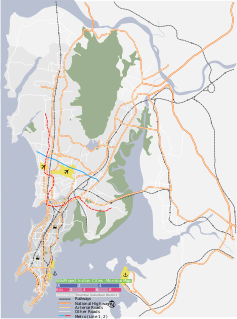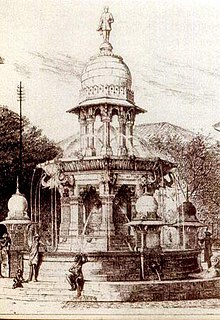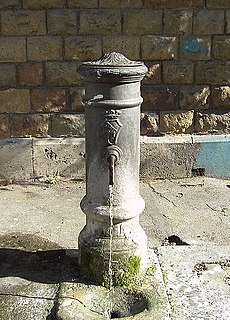 W
WA drinking fountain, also called a water fountain or water bubbler, is a fountain designed to provide drinking water. It consists of a basin with either continuously running water or a tap. The drinker bends down to the stream of water and swallows water directly from the stream. Modern indoor drinking fountains may incorporate filters to remove impurities from the water and chillers to lower its temperature. Drinking fountains are usually found in public places, like schools, rest areas, libraries, and grocery stores. Many jurisdictions require drinking fountains to be wheelchair accessible, and to include an additional unit of a lower height for children and short adults. The design that this replaced often had one spout atop a refrigeration unit.
 W
WThe Berkeley Memorial stands in the centre of the Circus in Basseterre, Saint Kitts and Nevis. The memorial features a drinking fountain as well as a clock. There are four clock faces, each one facing one of the four streets leading to the Circus. It was built in honour of Thomas Berkeley Hardtman Berkeley, a former president of the General Legislative Council in the 1880s.
 W
WBomanjee Hormarjee Wadia Clock Tower is a heritage structure in Fort, Mumbai, India, that was erected in 1882 using public funds as a token of appreciation for Bomanjee Hormarjee Wadi, a Parsi philanthropist who had contributed to the cause of education in the city. He was a member of the Bombay Native Education Society and on the board of Elphinstone Institution. He died on 3 July, 1862.
 W
WCrawford Market Fountain or Lockwood Kipling Fountain is a listed heritage structure in Crawford Market, Mumbai that was erected in 1874, and was designed by William Emerson, the British architect who also designed the market. The style is a mix of Greek Revival and Neo-Gothic, and the four carvings depicting the Indian river goddesses and native birds were done by John Lockwood Kipling, who was the principal at Sir Jamsetjee Jeejebhoy School of Art.
 W
WMulji Jetha Fountain is a listed heritage structure in Fort, Mumbai that was erected in 1894, following a commission by Ruttonsee Mulji, a cotton merchant who sought to commemorate the death of his only son, Dharamsi Mulji, who died aged 15 in 1889. The statue of a boy on top holding a book represents the son who loved reading. The drinking fountain was designed by architect Frederick William Stevens, and he was assisted by John Griffiths, the then principal of Sir Jamsetjee Jeejebhoy School of Art.
 W
WA nasone, also called a fontanella, is a type of drinking fountain found in Rome, Italy. Literally meaning "large nose", they got their name from their characteristic design first introduced in the 1870s. There are approximately 2,500–2,800 nasoni in Rome, supplying people with free drinking water.
 W
WA pulpulak is a public water fountain common in Armenia and Armenian-populated Nagorno-Karabakh Republic. Pulpulaks are a significant part of the Armenian culture. First pulpulaks appeared in the streets of Yerevan in 1920s and over time became extremely popular. Pulpulaks were and are often used by people to appoint meetings and by couples as dating locations.